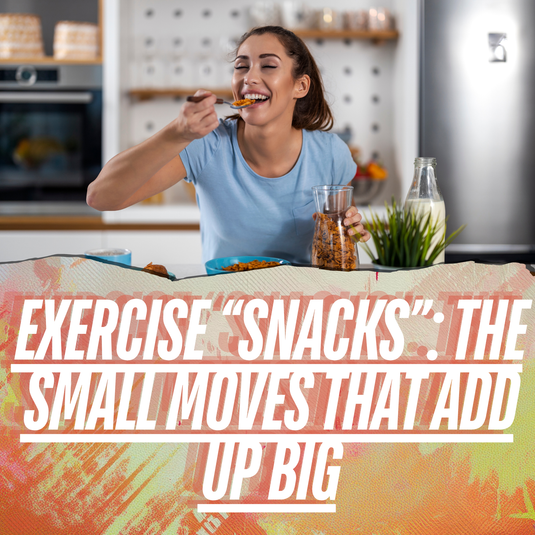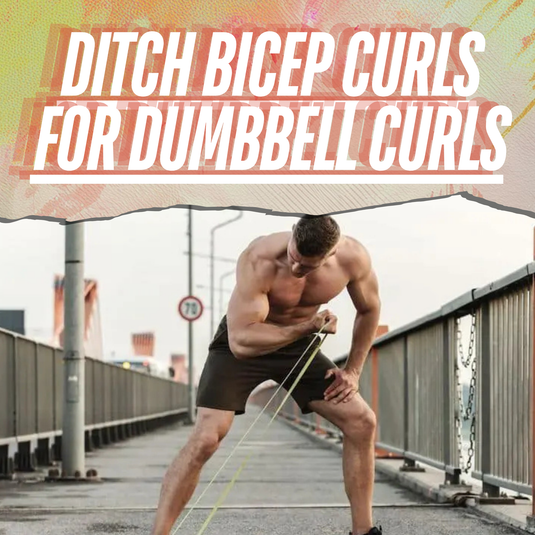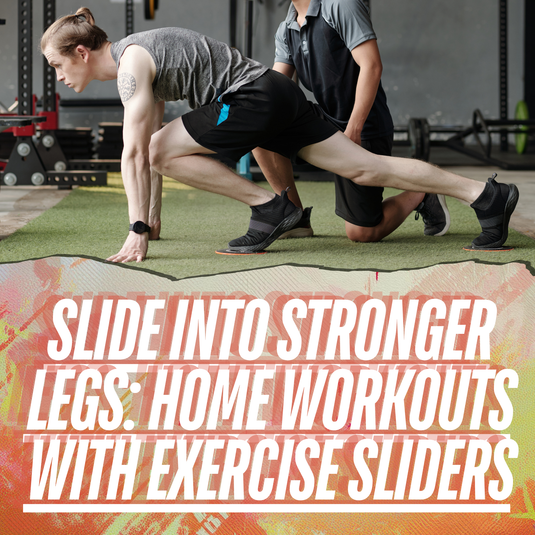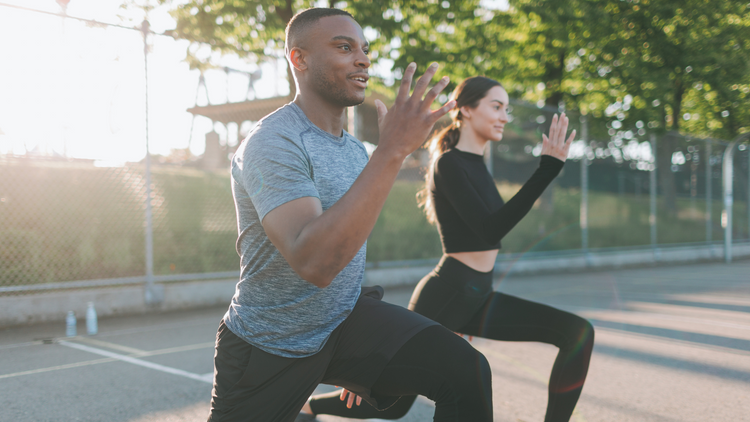21 Kettlebell Exercises to Add To Your Workout Routine
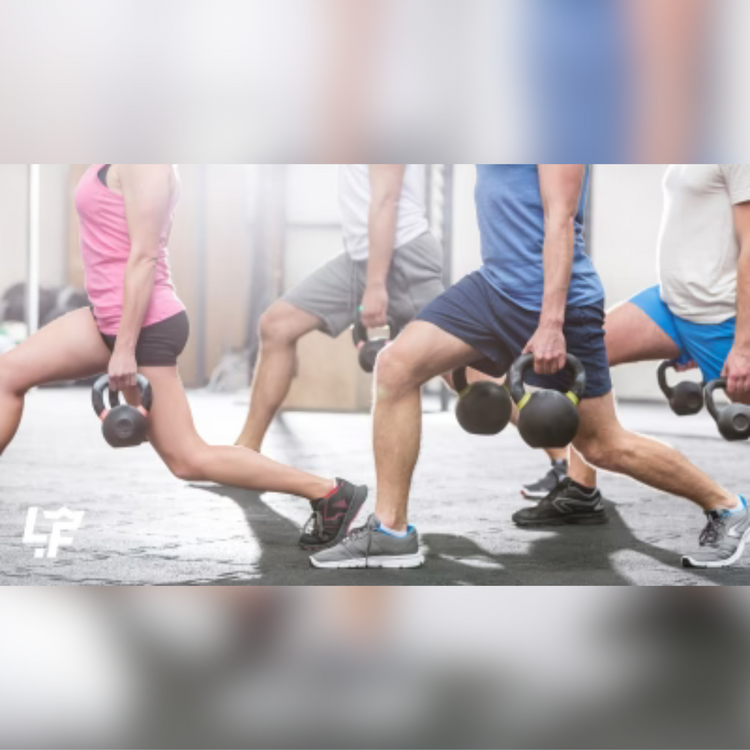
⏱️ Estimated Read Time: 6 minutes
🧠 TL;DR
- 21 Kettlebell Exercises to Add To Your Workout Routine offers effective, accessible movements for targeted results.
- This guide is designed to help you move smarter, build strength, and stay consistent.
✍️ Summary
This post explores 21 kettlebell exercises to add to your workout routine in a way that’s actionable and easy to follow. Whether you're new to this style of training or leveling up, it includes practical takeaways for your routine.
📚 Table of Contents
💬 What Are Kettlebell Exercises?
Kettlebell exercises are compound movements that challenge your strength, coordination, and balance. They're commonly used in functional training to work multiple muscle groups at once.
🧠 TL;DR
- 21 Kettlebell Exercises to Add To Your Workout Routine gives practical guidance for kettlebell users.
- This guide helps you avoid common mistakes and get stronger, safer results.
✍️ Summary
This article walks through key concepts and form tips around 21 kettlebell exercises to add to your workout routine. Whether you're new to kettlebells or refining technique, it delivers value with clear, actionable instruction.
📚 Table of Contents
What started as a simple farming tool in Russia has become a staple in fitness studios and CrossFit boxes worldwide.
Kettlebell exercises are a form of resistance training that offers a wide range of benefits, including increased strength, cardiovascular endurance, and improved balance and stability.
Plus, with the variety of exercises available, it's easy to incorporate kettlebell training into your existing workout routine to keep things fresh and exciting.
Let's explore 21 kettlebell exercises to build a complete kettlebell workout or to expand your current program.
Benefits of Kettlebell Training
Kettlebell training offers many cardiovascular, physical, and mental benefits, unlike its barbell or dumbbell counterparts.
Here are some of the most recognized benefits of integrating kettlebell exercises into your workout routine:
Builds Strength and Increases Muscle Mass
Kettlebell exercises engage multiple muscle groups at once, making them an effective way to build strength and increase muscle mass.
The kettlebell's unique shape also adds an extra challenge to traditional exercises, helping to recruit more muscle fibers and build functional strength.
One study found that kettlebell training resulted in a significant increase in maximal and explosive strength. This makes kettlebells very useful for athletes and anyone training for explosive strength and power. [1] [2]
Increases Cardiovascular Endurance
There's a reason why kettlebells are so popular among the CrossFit workout crowd: they are perfectly designed for metabolic conditioning workouts.
Kettlebell exercises can be performed during high-intensity, interval-style workouts, improving cardiovascular endurance. This type of workout is also fantastic for overall cardiovascular health.
One study found that kettlebell training, especially the kettlebell snatch exercise, was highly effective at increasing aerobic capacity. [3]
Combining strength and cardio training in one workout can also help you burn more calories and improve your overall fitness.
Improves Balance and Stability
Look at someone performing a kettlebell swing. You'll quickly realize kettlebells do more than build strength, muscle, and endurance. They also help to improve stability and balance.
Many kettlebell exercises require you to stabilize your body to maintain proper form. Naturally, the more you do this, the better you'll get at it.
As you improve, you'll notice that your overall balance and stability levels will increase. This can be particularly beneficial for older adults who must work on balance and stability to maintain an independent lifestyle. [4]
Helpful Resources:
Enhances Flexibility and Range of Motion
Kettlebell exercises often involve dynamic movements that require you to move through a full range of motion. This can help improve mobility.
When paired with the benefit of increased stability and balance, improved mobility can help to reduce the risk of injury while improving overall physical performance. [4]
Boosts Metabolism and Aids in Weight Loss
You get out what you put into kettlebell training. If you put in a lot of effort and intensity, that is what you'll get out of the workout.
If you aim to boost your metabolism, burn extra fat, and lose weight, kettlebell training can help.
Kettlebell workouts incorporate high-intensity interval training. This training has been shown to help you burn calories during and after your workout. What's more, consistent practice can support short-term and long-term weight management. [5]
Low-Impact and Joint-Friendly
With some exceptions, most kettlebell exercises are low-impact and joint-friendly, making them an excellent option for those with joint pain or injuries.
The kettlebell's unique shape also allows for a more natural and comfortable grip, reducing the risk of hand or wrist injuries.
Time Efficient Workout
One of the reasons that high-intensity interval training (HIIT) workouts caught on so quickly are because they are time efficient.
While the intensity is sky-high, the workout lasts only 20 to 30 minutes on average. [6]
Kettlebell exercises can be performed in a circuit or interval-style workout, making them a time-efficient way to get a full-body workout.
Another reason that people love HIIT workouts is the convenience factor.
You need your body weight and some space for an effective workout. The same applies to kettlebells. With just a few kettlebells and some area, you can get a challenging workout in a short amount of time.
Helpful Resources:
Kettlebell Exercises for Full Body
Kettlebell training is a great way to target multiple muscle groups at once and get a full-body workout that can provide all the above benefits.
Now, it's time to break down some of the best kettlebell exercises. Let's start with total body exercises.
Here are six kettlebell exercises that engage your entire body.
1. Kettlebell Swing
- Place a kettlebell on the ground between your legs.
- Stand with your feet shoulder-width apart.
- Hinge at the hips while keeping the back flat.
- Grab and hold the kettlebell with both hands between your legs.
- Begin with small swings to build momentum.
- Use your glutes and core to thrust forward. As you go backward, push your hips back.
- Eventually, get the kettlebell to shoulder height.
2. Kettlebell Turkish Get-Up
- Start by lying on your back on the ground, with your legs straight and your arms extended overhead, holding the kettlebell by the handle with both hands.
- Bend your right knee and place your right foot flat on the ground. Keep your left leg straight on the floor and your left arm extended to your side.
- With your right arm, press up the kettlebell toward the ceiling.
- It's essential to lock out your elbow and maintain a straight wrist.
- Keeping your eyes on the kettlebell, use your left hand to push yourself up onto your left elbow. Keep your right arm straight and press the kettlebell toward the ceiling.
- Next, push yourself onto your left hand, keeping your right arm straight and the kettlebell overhead.
- Bring your hips up and move your left leg underneath you. Your left leg will be in a kneeling position with the foot flat on the ground. Your right knee is still bent.
- Straighten your torso, keeping your right arm extended overhead and your left arm extended to your side for balance.
- Stand up, keeping your gaze on the kettlebell and your core engaged. Once fully upright, reverse the steps to return to the starting position.
3. Kettlebell Clean and Press
- Start by standing with your feet shoulder-width apart, with two kettlebells on the ground in front of you.
- Hinge at your hips, bending your knees slightly, and reach down to grasp the handles of the kettlebells with both hands.
- Engage your core and hoist the kettlebells off the ground, keeping them close to your body.
- As the kettlebells reach chest height, rotate your wrists and let them rest on the back of your wrists, with your elbows tucked into your sides and your forearms vertical, in the rack position.
- Take a deep breath, then press the kettlebells overhead, extending your arms fully.
- Pause at the top of the press, then lower the kettlebells back down to the rack position.
- Next, lower the kettlebells back down to the ground, keeping your back straight and your core engaged.
4. Kettlebell Thruster
- Hold the kettlebell in a front rack position with both hands.
- Your elbows should be bent, and the kettlebell should be resting on your forearms.
- Squat down, then drive up through your legs while pressing the kettlebell overhead.
- Lower the kettlebell back down to the starting position, and repeat.
5. Kettlebell Single-Arm Snatch
- Stand with your feet shoulder-width apart and hold the kettlebell in one hand.
- Swing the kettlebell between your legs and then use the momentum to pull it up to shoulder height.
- From there, press the kettlebell overhead in one fluid movement.
6. Kettlebell Farmer's Walk
- Hold two kettlebells at your sides.
- Walk forward while maintaining good posture and engaging your core.
- Take short, quick steps and keep your shoulders pulled back and down.
Helpful Resources:
- Build unlimited workouts here
- Get equipment like dumbbells or bands here
Kettlebell Exercises for Upper Body
Incorporating kettlebell exercises into your workout routine is a great way to challenge your upper body muscles.Here are five kettlebell chest exercises, back exercises, and shoulder exercises.
7. Kettlebell Floor Press
- Lie on your back while holding a pair of kettlebells.
- Bend your elbows and lower them to the floor
- Press the kettlebell up towards the ceiling as if you were doing a bench press.
- Slowly bring the weights down, and repeat.
8. Kettlebell Upright Row
- Stand with your feet shoulder-width apart and hold the kettlebell with both hands in front of your body.
- Lift the kettlebell straight up with your elbows in line with your shoulders.
- Lower the kettlebell back down to the starting position, and repeat.
9. Kettlebell Overhead Press
- Hold a pair of kettlebells and stand tall with your chest up and shoulders back.
- Bring the kettlebells to shoulder height. This starts the movement.
- Push the kettlebells towards the ceiling, contracting and pausing at the top.
- Slowly lower the weights back down to shoulder height, and repeat.
10. Kettlebell Windmill
- Hold the kettlebell in the left hand and press it overhead. Extend your right arm out to the side.
- Pivot your feet and hinge at your hips, lowering your torso towards the ground.
- Keep your left arm extended overhead as you lower yourself.
- Touch the floor with your right hand.
- Return to the starting position.
- Repeat on the right side once you finish all the repetitions for the left side.
- Hold a pair of kettlebells and hinge at your hips.
- Leading with the elbows, row the kettlebells up towards your chest.
- Contract and squeeze the back muscles.
- Slowly lower them back down toward the ground.
Kettlebell Exercises for Lower Body
You might be used to barbells for your lower body workouts. Still, kettlebells can also deliver an intense leg day session.
Here are five kettlebell exercises that target your quadriceps, glutes, hamstrings, calves, adductors, and abductors:
12. Kettlebell Front Squat
- Hold a pair of kettlebells in a front rack position.
- With your elbow bent, rest the kettlebells on your forearm.
- Hinge at the hip, pushing them back, and keep your chest up.
- Squat down until your thighs come to parallel or just below parallel.
- Drive up through your legs and glutes to return to the starting position.
13. Kettlebell Jump Squat
- Hold a pair of kettlebells as you stand tall with your chest up and shoulders back.
- Bend at the knees and hinge at the hips, pushing your hips back.
- Squat down until your thighs are parallel to the ground.
- Explode up into a jump while holding the kettlebells
- Land softly and repeat the movement.
14. Kettlebell Reverse Lunge
- Hold a pair of kettlebells with your chest up and shoulders back.
- Step back with the left foot while maintaining proper posture.
- Lower your body until your front knee is bent at a 90-degree angle.
- Drive through your front foot to return to the starting position, and repeat on the other side.
15. Kettlebell Deadlift
- Stand with your feet shoulder-width apart and hold on to a pair of kettlebells.
- Hinge at your hips, pushing your glutes back toward the wall and lowering the kettlebell towards the ground.
- Make sure to keep your back straight throughout.
- Drive through your heels to stand back up to the starting position.
16. Kettlebell Curtsy Lunge
- Hold a pair of kettlebells while maintaining proper posture.
- Step back with your left foot, crossing over the right foot.
- Lower your body down until you feel all the workload being placed on the stepping foot/heel.
- Drive through your front foot to return to the starting position, and repeat on the other side.
Kettlebell Exercises for Core
Did you know that all movement originates from your core? To say that core movements are essential would be a colossal understatement.
Thankfully, we've got five kettlebell exercises that target your abs, obliques, and lower back. These are perfect for a kettlebell core workout:
17. Kettlebell Core Twist
- Sit on the ground with your legs extended and hold the kettlebell with both hands.
- Lean back slightly and twist your torso to one side. Only go as far as the shoulder, then move to the other side.
- Keep moving the kettlebell from side to side in this pre-set space.
- Do not touch the ground with the kettlebell. This is NOT a Russian Twist.
18. Double Kettlebell Sit-Up to Press
- Lie on your back with a pair of kettlebells in your hands.
- Perform a sit-up, and press the kettlebell overhead at the top of the movement.
- Lower the kettlebell and return to the starting position, and repeat.
-
Kettlebell Side Bends
- Hold the kettlebell in one hand and stand with your feet shoulder-width apart.
- Lean to the side with the kettlebell, engaging the obliques.
- Return to the other side, lowering the kettlebell towards the ground.
- Come back up to the starting position for the next repetition.
- Once you finish all your reps, repeat on the other side.
20. Kettlebell Figure-8s
- Stand with your feet shoulder-width apart and hold the kettlebell with one hand.
- Pass the kettlebell between your legs, switching hands behind your body.
- Bring the kettlebell back up to the starting position, then pass it between your legs again, switching hands in front of your body.
21. Kettlebell Plank Drag
- Start in a plank position with one hand on the kettlebell.
- Drag the kettlebell under your body to the other side, using your core to stabilize your body.
- Repeat the movement on the other side, alternating hands.
As with any workout routine, it's vital to approach kettlebell training with a solid understanding of using the equipment safely and effectively.
Here are some frequently asked questions about incorporating kettlebell exercises into your workout routine:
How Often Should I Use Kettlebell Exercises?
The frequency of your kettlebell workouts will depend on your fitness goals and overall exercise routine. Generally speaking, incorporating kettlebell exercises into your workout routine two or three times per week can be effective for building strength and improving overall fitness.
How to Choose the Right Kettlebell Weight?
Choosing the appropriate kettlebell weight is essential for maintaining proper form and technique during your exercises.
In general, the heavier the weight, the fewer the reps you'll be able to safely perform.
Are you trying to build strength? Choose a weight that matches your fitness goals. Aim for a weight allowing you to do three to seven repetitions.
Want to build muscle? Stick within the 8 to 12-rep range.
Looking to build endurance and power? Select a lightweight that will let you perform more than 15 reps.
Importance of Proper Form and Technique
Proper form and technique are essential for avoiding injury and getting the most out of your kettlebell exercises.
Focus on maintaining good posture, engaging your core, and using your hips and legs to generate power and momentum.
If you need more clarification on proper form, consider working with a fitness professional or using online resources to learn the basics.
How to Progress and Modify Kettlebell Exercises
Once you've mastered the basics of kettlebell training, it's important to continue challenging your body by progressing and modifying your exercises.
This can include increasing the weight of your kettlebell, performing more advanced !
Helpful Resources:
- Be alerted when we publish more like this to our blog here
- Daily workout plans here
- Fitness Equipment like resistance bands, pull up bars, etc here
- Free kettlebell workouts here
- Follow along with $1 video workouts here
References
1.Lake, Jason P.; Lauder, Mike A.. Kettlebell Swing Training Improves Maximal and Explosive Strength. Journal of Strength and Conditioning Research 26(8):p 2228-2233, August 2012. | DOI: 10.1519/JSC.0b013e31825c2c9b.
2.Meigh, N.J., Keogh, J.W.L., Schram, B. et al. Effects of supervised high-intensity hardstyle kettlebell training on grip strength and health-related physical fitness in insufficiently active older adults: the BELL pragmatic controlled trial. BMC Geriatr 22, 354 (2022). https://doi.org/10.1186/s12877-022-02958-z.
3.Falatic JA, Plato PA, Holder C, Finch D, Han K, Cisar CJ. Effects of Kettlebell Training on Aerobic Capacity. J Strength Cond Res. 2015 Jul;29(7):1943-7. doi: 10.1519/JSC.0000000000000845. PMID: 26102260.
4.Jay, Kenneth1; Jakobsen, Markus D.1; Sundstrup, Emil1; Skotte, Jørgen H.1; Jørgensen, Marie B.1; Andersen, Christoffer H.1; Pedersen, Mogens T.2; Andersen, Lars L.1. Effects of Kettlebell Training on Postural Coordination and Jump Performance: A Randomized Controlled Trial. Journal of Strength and Conditioning Research 27(5):p 1202-1209, May 2013. | DOI: 10.1519/JSC.0b013e318267a1aa.
5.Atakan MM, Guzel Y, Shrestha N, et al. Effects of high-intensity interval training (HIIT) and sprint interval training (SIT) on fat oxidation during exercise: a systematic review and meta-analysis. British Journal of Sports Medicine 2022;56:988-996.
6.Gillen JB, Gibala MJ. Is high-intensity interval training a time-efficient exercise strategy to improve health and fitness? Appl Physiol Nutr Metab. 2014 Mar;39(3):409-12. doi: 10.1139/apnm-2013-0187. Epub 2013 Sep 27. PMID: 24552392.
Want more workouts? Check out our Weekly Dumbbell Workout #1.
Are kettlebells good for full-body workouts? +
Yes! Kettlebells can be used for cardio, strength, flexibility, and coordination—all in one tool.
How heavy should my kettlebell be? +
Start with a manageable weight (8–16kg for most beginners) and increase as strength and form improve.
How often should I do kettlebell workouts? +
2–3 times per week is a great starting point for most people focused on general fitness.
Want more workouts? Check out our Weekly Dumbbell Workout #1.
Are kettlebells good for full-body workouts? +
Yes! Kettlebells can be used for cardio, strength, flexibility, and coordination—all in one tool.
How heavy should my kettlebell be? +
Start with a manageable weight (8–16kg for most beginners) and increase as strength and form improve.
How often should I do kettlebell workouts? +
2–3 times per week is a great starting point for most people focused on general fitness.
Want more guidance? Check out our Weekly Dumbbell Workout #1.
📝 FAQs
How often should I do these exercises? +
2–3 times per week is a good starting point for most people.
Do I need equipment? +
Many of these can be done with just your bodyweight or a single kettlebell or dumbbell.
Can beginners do these routines? +
Yes! These movements are designed to scale with your fitness level.



